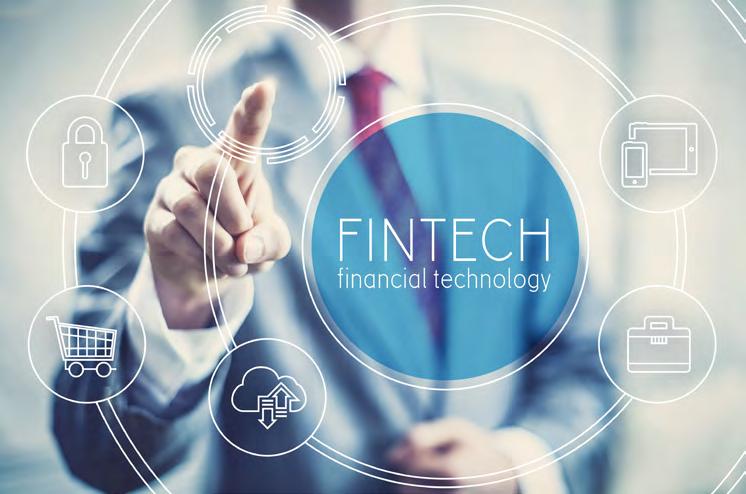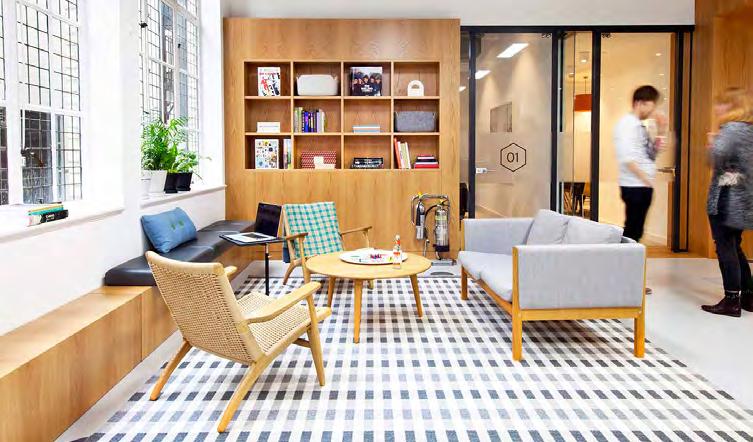
19 minute read
Making a commitment to sustainable agriculture
from BR/10/2021
What is sustainability in agriculture? What is Bayer’s strategy for sustainability in this field?
Sustainable agriculture includes all the tools and practices farmers use to improve productivity and grow safe, healthy, and affordable food, all while preserving natural resources. In short, it’s a way to produce more with less! In line with the Sustainable Development Goals of the United Nations and the Paris Agreement, Bayer’s sustainability commitments are designed to address the challenges of climate change, biodiversity loss, and food security to create a better tomorrow for our society and our planet. Our ambition is to achieve a balance between production and protection – in a nutshell, how do we feed the world without starving the planet?
Advertisement
What are the key areas where agriculture could contribute to sustainability within the bigger picture?
Agriculture is part of the solution to the world’s biggest challenges. More specifically, it is not only about reducing the climate impact of farming that, but also about enhancing farms’ immense contribution to carbon sequestration. Precision farming, innovative hybrid seeds that are tolerant to drought and pests, and new crop protection products with more favourable environmental profiles can all reduce water, labour or energy usage.
What is the role of digital technology in sustainable agriculture and what can you tell us about precision agriculture?
Precision and digital farming help farmers work in a smarter manner by combining their expertise and knowledge of their land with modern, digitally-enabled tools that collect and organise massive data, providing them with actionable insights that allow for better decision-making. Bayer is introducing digital tools – such as Climate FieldView – that provide farmers with real-time agronomic advice, resulting in both income generation and safer food through sustainable farming practices.
Do we need to update our environmental legislation in order to achieve a better level of sustainability for Romanian agriculture? What are some key ideas and solutions in this area?
I believe it is of the utmost importance to have national legislation that is consistent with European policies. The new Common Agricultural Policy and the Green Deal are expected to bring changes to our sector, and we need to be prepared to embrace those Boualem Saidi, Country Group Head for Romania, Bulgaria, and Moldova at Bayer Crop Science, sat down with Business Review to talk about the importance of sustainability in agriculture and tell us why it is no longer a matter of choice, but both a need and a responsibility.
By Anda Sebesi
changes from both an operational and a legislative perspective. To go into more detail, one key issue for us the legal framework on manufacturing, marketing, and use of plant protection products to control diseases, pests, and weeds in agriculture and forestry, which should be updated so as to be aligned with European legislation. Another example is adapting legislation to accommodate the use of drones to spray crop protection products.
Are local agribusinesses and seed or PPP manufacturers prepared to embrace sustainable business practices?
Definitely! Our industry is ready to embrace sustainability. It has already embarked on this journey and, in my opinion, it is no longer a question of choice; it is a need and a responsibility. We all need to contribute and support farmers with agronomical solutions that help them remain competitive, while making sure that our natural resources are preserved for future generations. Our industry is one of the most innovative and it integrates a lot of technology. At Bayer, sustainability is at the core of our strategy and our long-term success as a company lies in providing farmers with the best possible tools and solutions to help them obtain better harvests using less water, land, and energy.
Romania’s fintech ecosystem: top players & key insights
Romania has several advantages that support the expansion of its financial technology innovation. Investors can benefit from a common economic market as Romania is an active member of the European Union. One of the country’s greatest assets is its human capital, which includes many skilled IT professionals. Leading technology providers have already spotted the great potential.
By Claudiu Vrinceanu
KEY INSIGHTS
Over the last couple of years, the fintech industry has risen to the top of the Romanian entrepreneurial scene. Many Romanian startups and scaleups have switched their focus to explore what fintech means and what it can bring to the table. As a result, recent studies show that the Romanian fintech market grew exponentially in 2021. However, domestic companies operating in the industry quickly acknowledged the lack of legal and business know-how regarding the fintech sector on the local market, and they soon expressed the need for reciprocal support.
The largest banks in Romania (Banca Transilvania, BCR, BRD, ING Bank, and Raiffeisen Bank) have over 6 million digital customers, who frequently use internet banking and mobile banking services. These credit institutions cover a total customer portfolio of almost 12 million, so we can deduce that, on average, about 50 percent of consumers have adopted the concept of "remote banking."
Found at the intersection of technology and financial services, fintech startups leverage their strengths in cooperative relationships with traditional financial institutions, including their agility and speed of execution, focus on customers' needs, and orientation towards technology and accessibility.

The Romanian fintech market grew exponentially in 2021
PLAYERS
The Romanian Fintech Association - RoFin. Tech was founded in January 2020 as a professional, entrepreneurial association to represent companies founded by Romanian individuals that build proprietary technology products.
The association aims to increase the penetration of digital tech and entrepreneurship into financial services, create and grow the offline and online channels needed for companies to expand globally, and educate and expand the community of entrepreneurs and professionals working in fintech.
TECH STARTUPS
Five of the most active and experienced Romanian fintech startups are Finqware, Instant Factoring, IFactor, Beeza, and the wannabe unicorn FintechOS, the company that recently closed a USD 51 million series B financing round. Among the newcomers are Salarium, Bankata.ro, Prime Dash, and Smart Fintech. Prime Dash, a Romanian tech startup based in Oradea, aims to open new offices in France, Germany, and the UK. Smart Fintech launched SmartPay, the first Open Banking alternative payment solution authorised by the central bank in Romania.
INTERNATIONAL PLAYERS
French fintech iBanFirst has opened an office in Bucharest, the company's first in Central and Eastern Europe. iBanFirst is a financial services provider that addresses the needs of SMEs. As an alternative to traditional bank offerings, it developed an online platform that allows companies to conduct transactions in over 30 currencies. ZEN, the licensed Polish startup that offers financial solutions using modern payment technologies, announced its launch in Romania this year. The new solution has Mastercard support and offers shopping cards, an online payment platform, and multiple currency accounts.
Four new types of capital for Romanian innovation firms
Financing is increasingly critical in entrepreneurs’ hierarchy of needs in the post-covid-19 economic recovery, which offers many opportunities for local and global growth. More founders are growing with the help of several funding sources. Let's look at four options that have emerged during the pandemic or that are more accessible for companies now than they were in previous years.
By Claudiu Vrinceanu
INSTITUTIONAL INVESTORS
Until recently, we had not seen institutional funding going directly to Romanian startups or scaleup tech companies. For example, the International Finance Corporation (IFC) is supporting the global expansion of FintechOS – likely to be the next Romanian unicorn – with a USD 10 million investment. What is striking about this financing is the fact that it was the first investment granted directly to a Romanian tech scaleup by the IFC. Before this move, the IFC had invested indirectly in FintechOS by injecting USD 22.2 million in the Earlybird Digital East Fund II, a fund closed in February 2021 with a final capitalisation of EUR 200 million. The European Bank for Reconstruction and Development (EBRD) also signed an investment commitment of EUR 30 million for the fund managed by Earlybird. The European Investment Fund (EIF) also contributed. In addition, Earlybird, whose latest investment fund will be operational until July 30, 2029, was one of the investors in the USD 60 million (EUR 51 million) Series B financing round raised by FintechOS. Today, we can conclude that there is a lot of money available on the market for financing Romanian tech companies with potential for regional or global growth if we were to also look at the funding raised by Romanian startups over the last few months.

Over the past year, we have seen a consolidation of the angel investor community
ANGEL INVESTOR ASSOCIATIONS
Given that the traditional source of financing – bank lending – is limited due to young companies’ high risk level, business angels have proven to be a viable alternative source of funding for these businesses. Not only has the number of individual investors in tech startups increased steadily in recent years, but over the past year, we have seen a consolidation of the angel investor community. There is an active trio worth mentioning on the Timisoara - Bucharest - Cluj axis, which includes Growceanu, TechAngels, and the Transylvania Angels Network. Growceanu is a group of business angels from Timisoara that wants to invest up to 1 million euros this year in 18 transactions. TechAngels and Transylvania Angels Network are open groups of private investors, from Bucharest and Cluj respectively, who are interested in investing in tech startups from Romania and the region. Romania’s business angel legislation is still not applicable, as this project has been blocked since 2016.
FOUNDERS TURNED MILLIONAIRES
Several Romanian companies, both in the tech sector and outside of it, have already created Romanian millionaires. In turn, some of them are investing in new projects on the local market, and an excellent example of this is Daniel Dines, one of the co-founders of UiPath, who has begun investing in tech startups. One example is Romanian startup FameUp, a mobile platform for micro-influencers, which attracted EUR 2.5 million from the Early Game Ventures investment fund. Daniel Dines participated as an angel investor.
INTERNATIONAL INVESTMENT FUNDS
In 2019 and 2020, Romanian tech startups in the seed phase would usually attract funding from venture capital funds established in Romania, but in 2021, we’re seeing more founders being able to attract worldwide investors. One example is Romanian startup Framey, which received a USD 1 million investment from ICE Capital in Dubai, with the support of local fund JECO Capital.
Bucharest among world’s most promising startup ecosystems

Bucharest ranks 40th out of 100 emerging startup ecosystems
Baltic states Estonia and Lithuania, Bucharest, the Polish cities of Warsaw and Krakow, and Czech capital Prague all appeared on a recent list of the 100 most important emerging startup ecosystems published by Startup Genome and the Global Entrepreneurship Network. Part of a more extensive study on startup ecosystems titled Global Startup Ecosystem Report, this ranking focuses on 275 locations across more than 100 countries which are in early stages of development, presenting those that have the potential to become top global players in the coming years.
Bucharest ranks 40th out of 100 emerging startup ecosystems, with advantages in areas like market coverage and performance achievement, where it obtained 10 and 9 points respectively out of a maximum of 10.
The financing of startups is not one of Bucharest’s strong points, with the city obtaining a score of only 3 out of 10 on this metric. And even though Bucharest was the birthplace of one of the most innovative unicorns in the world, UiPath, the main problem facing the region’s startup ecosystem is an acute shortage of talent: the Romanian capital only received one point out of 10 in this regard, and so did Estonia and Lithuania.
THE VALUE OF THE STARTUP ECOSYSTEM
Bucharest stands out for the total value of its startup ecosystem, which amounts to 35.3 billion dollars, the second largest among emerging ecosystems, after Detroit (37.2 billion dollars).
The global startup economy is worth over USD 3.8 trillion in Ecosystem Value, more than the individual GDP of most G7 economies, not including the value of exits prior to Bucharest is one of the largest emerging startup ecosystems globally, with a sector value amounting to over USD 35 billion. Still, the shortage of talent is one of the main threats to the area's potential to become a global player. Let’s take a look at how the local startup ecosystem fared in 2021.
By Claudiu Vrinceanu
2018. There are now 79 ecosystems generating over USD 4 billion in value, more than double the number identified in 2017, while 91 ecosystems created unicorns in 2020.
TOP GLOBAL STARTUP ECOSYSTEMS
North America continues to dominate the global ranking, with 50 percent of the top 30 startup ecosystems coming from this region, followed by Asia with 27 percent and Europe with 17 percent.
Despite a turbulent year for many, the top five global startup ecosystems maintain their reign, with Silicon Valley in the number one position, followed by New York City and London, which tied at #2 for the second year in a row. Beijing and Boston follow at #4 and #5, respectively.
Other high-ranking regions on the list of emerging startup ecosystems include Mumbai (India), Copenhagen (Denmark), and Jakarta (Indonesia). No location in Central and Eastern Europe was included among the top 30 startup ecosystems in the world. Tokyo is the only new entrant in the top 10, rising six places to 9th place. Shenzhen also entered the top 20, ranking 19th. Philadelphia has also advanced 15 spots, from 43rd last year to 28th this year.

The expansion of real estate wellbeing
The Global Wellness Institute believes that residential real estate is the next frontier that will be radically transformed by the wellness movement. Our homes, communities, and surrounding environment directly affect our daily behaviours and lifestyles, and together these determine up to 80-90 percent of our health outcomes. Since our homes are typically our most important personal investment and expenditure, it is only logical that they should also be an investment in our health and wellbeing.
By Romanita Oprea

The wellbeing is prioritized in the new office buildings
The pandemic has completely transformed the concept, function, and value of the home. “It became our everything, from where we worked to where we exercised, and during this long crisis, more people have questioned where and how they want to live, what they want in a home and a community. The short answer is “more wellness”: more safety; nature and sustainability; space and serenity to work; more purpose, meaning, and true community. Many people are now seeking homes and communities that are purpose-built to deliver more physical, mental, and social wellbeing. This is not just a temporary result of the pandemic, but the outcome of bigger cultural, environmental, and demographic shifts that will play out over decades,” the Global Wellness Institute writes.
This reshuffling of our priorities has created a powerful opportunity within the real estate industry, driven by growing consumer demand for products that support wellness, personal growth, and environmental values.
In fact, at its core, wellness real estate is really all about creating built environments – from homes and hotels to offices and apartment buildings – that are proactively designed around the occupant’s holistic health. Wellness is no longer an esoteric nicety, but a powerful movement that will shape huge facets of the industry over the coming years.
A VERY PROFITABLE MARKET
In this context, international specialists believe that the global wellness real estate industry will reach a value of USD 197 billion by 2022, having grown by 6.4 percent annually since 2015. In North America alone, the market is worth USD 52 billion, with 1.3 million buyers each year seeking wellness communities and wellness homes.
Nearly 30 percent of consumers from all income ranges are willing to pay more for real estate that prioritises wellness. As shown by the Global Wellness Institute, there are over 740 wellness lifestyle real estate and community developments built, partially built, or in development around the world, across 34 countries—and this number is growing every day. These include master-planned communities, multifamily housing, urban districts and mixed-use projects, resort/spa-based real estate, and other types of projects.
Wellness lifestyle real estate is an industry that recognises, and has the potential to meet, today’s immense health challenges. It represents a shift that explicitly puts people’s wellness at the centre of the conception, design, creation, and redevelopment of our homes and neighbourhoods. Importantly, this movement does not have to start from scratch; it can borrow and learn from many historical/current movements and integrate their best features through a multidimensional wellness lens. Many elements of the green/ sustainable building movement, designdriven movements, the food movement, New Urbanism, intentional communities, and others are already being adapted, mixed, and incorporated in innovative ways into new and upcoming wellness-focused residential projects and communities.
“The pandemic has hit us in many ways: first of all, it has had an impact on people’s mindset, psychology, behaviour, and many other areas besides the economic and financial dimensions. If we’re talking about wellness, the impact is two-sided: on one hand, wellness has been more carefully addressed (people started to search for wellness products and facilities in order to destress, they started going to the gym or the spa, and so on), but on the other hand, restrictions have been forcing some people to give up on old habits and have cut off their access to
wellness activities or products,” said Ramona Iacob (Predescu), Romania country manager at IWG. Moreover, she believes that a space that creates wellbeing should be able to provide the people occupying it with inner peace, comfort, and a relaxing atmosphere, and this can be achieved by adding elements and programmes. For example, office spaces can be enhanced with break areas, plant corners, relaxation areas, reading corners, even small games corners providing cards, Jenga or colouring books, massage hours, posture workshops, yoga time in the office, etc. “But it is also very important to think about what people use the premises for, about their overall attitude and mindset, and what kind of energy is transmitted to the occupiers by the staff who manages such spaces. All these elements should be in the mix, and the final test is how the consumer feels, whether they have a good experience, whether they feel welcome. That’s what will make a difference,” Ramona Iacob added.
ADAPTING TO THE MARKET AND GROWING
In response to the growing market demand, new design concepts and certifications have been rapidly emerging. According to Proven Partners, Biophilic design is an emerging architectural field that creates spaces in buildings and communities to help support everything from cognitive function and physical health to psychological wellbeing, reducing blood pressure and stress hormone production while syncing our busy lives with our natural rhythms. The WELL Building Standard puts health and wellness at the centre of design and construction decisions, measuring, certifying, and monitoring features of the built environment that impact human health and wellbeing, through air, water, nourishment, light, fitness, comfort, and mind.
A study conducted by Skanska focusing on how the pandemic has changed CEE employees’ perception of the ideal work space found that Romanians especially have started to pay more attention to wellness issues, and that the design factor has become an important motivator in their decision to return to the office. A high share of Romanian employees (33 percent) are now interested in green, open-air spaces and outdoor areas where they can work, but also rest and relax. After a year of working from the comfort of their own homes, Romanian employees are also paying more attention to the comfort-related factors in the office, which include the quality of the furniture (11 percent) and rooms designed for relaxation (19 percent). Other important wellbeing factors for Romanian employees include access to high-quality and healthy meals (31 percent), proper lighting that does not tire the eyes (27 percent) and air quality, as 17 percent of respondents stated that they did not want to spend their time in a confined space with air conditioning. Health and safety are also among Romanians’ top priorities.
“The environment has a direct impact on both physical and mental health. Wellbeing is also influenced by the floor space configuration and congestion level, noise, inside air quality, and light. Through WELL Certifications standards, Skanska offers a wellbeing measuring system that is built around 7 elements and increases office life quality through building features. These elements are air, water, nourishment, light, fitness, comfort, mind. Therefore, a space that creates wellbeing for its occupants pays close attention to these 7 crucial factors,” said Aurelia Luca, executive vice-president of Skanska’s CEE operations for Hungary and Romania.
Clean air, good quality water, nourishing and healthy food are at the base of a balanced lifestyle. Light plays an important role in sustaining the body’s circadian rhythm and ensuring good quality sleep at night, therefore Skanska offices provide professional lighting systems that always provide comfort and do not tire the eye. Nonetheless, all the layers of comfort (thermal, acoustic, ergonomic, olfactive, and air humidity) should be optimised to best suit the characteristics of workplace and the needs of its tenants. “The working space should offer employees the opportunity to have an active lifestyle and encourage exercise. Rooftop running tracks and strategically placed interior stairs are some of the solutions that Skanska implements in its office buildings. Campus 6.2 & 6.3 were the first office buildings in Romania to have rooftop running tracks,” Luca added.


Last but not least, the mental wellbeing of employees should be a priority in every office. According to Luca, the office building should be designed as a hub that makes it easy to form and consolidate communities, promoting cognitive and emotional health. Skanska buildings integrate green co-working outdoor areas combining two essential elements: human connection and nature connection. Easy access to exterior spaces improves both mental and physical condition. “Romanian employees are looking for office spaces that can easily adapt to change and that can always be reinvented in order to meet new needs. The post-pandemic office space needs to always make employees feel good and safe,” Luca noted.
To adapt to the current situation, Skanska has developed the “Care for Life Office Concept,” which focuses on making employees feel safe when they come back to work.






